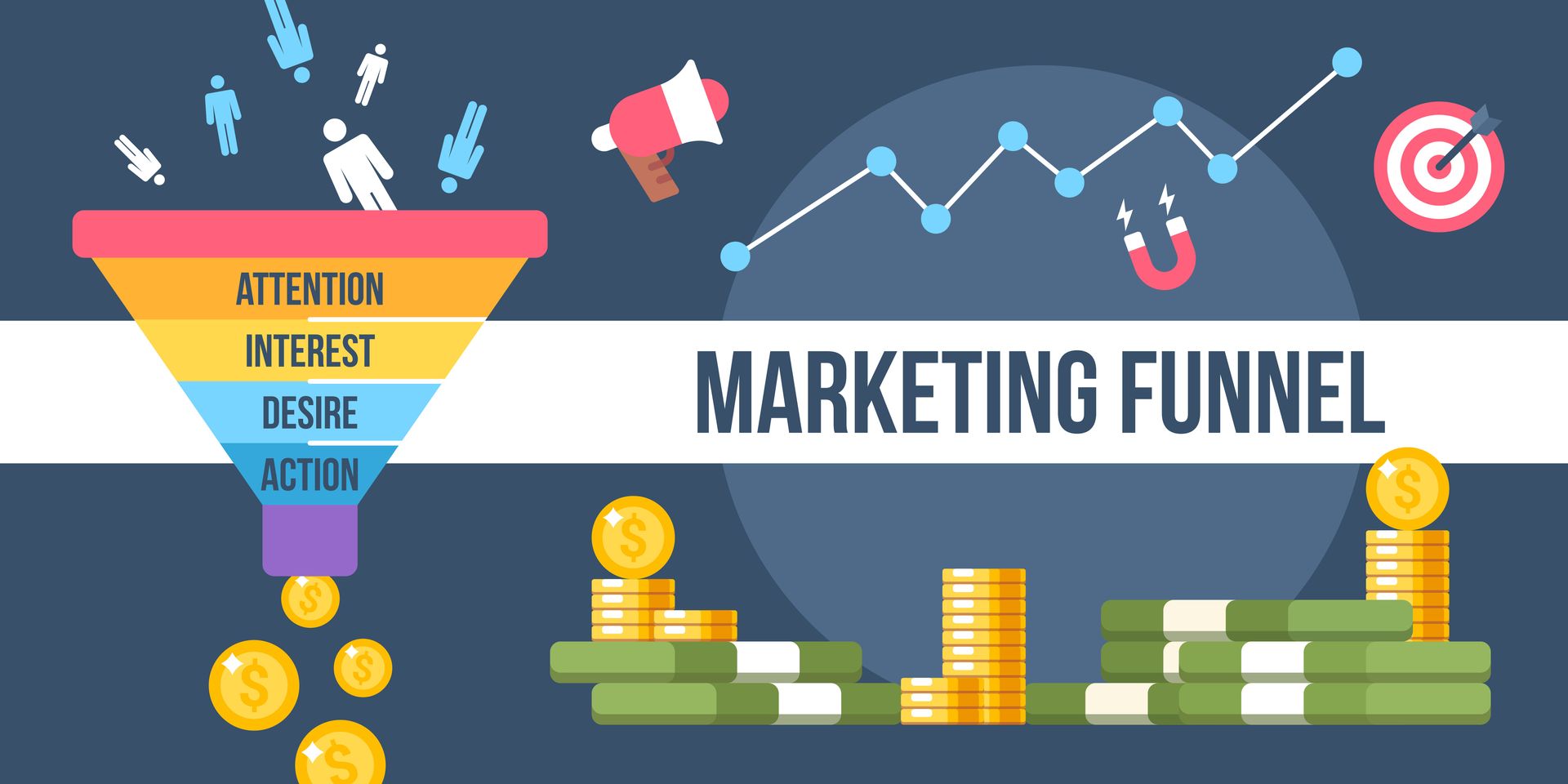Mastering the Marketing Funnel
A lot has changed in marketing over the past few decades. The digital landscape, how consumers shop, and how businesses are created have all contributed to these changes. One aspect of marketing has remained constant: getting customers to purchase a product or service. However, the strategy and process of how prospects turn into customers have changed.
The marketing funnel is how marketing teams aim to turn prospects into customers who have made a purchase and will become returning customers. Each company has its unique marketing funnel, but most boil down to similar steps. In the past, the marketing funnel followed the AIDA model: Awareness, Interest, Desire, and Action. Marketers are adding more steps to the funnel to secure their brand's position. Let's compare the tried-and-true marketing funnel with a modern iteration and learn how your small business can implement these steps.

Old Marketing Funnel:
Awareness
The awareness stage begins the customer journey, where potential buyers first encounter a brand or product. Creating awareness is crucial as it introduces the brand to the audience, making them aware of its existence. Effective awareness strategies, such as advertising and content marketing, aim to capture attention and lay the foundation for further engagement.
Interest
Once a business establishes awareness, the interest stage focuses on deepening the audience's engagement. It involves providing valuable information, addressing pain points, and showcasing unique selling propositions to keep the audience interested. Building interest helps establish a connection between the brand and the potential customer, making them more likely to explore the offering in greater detail.
Desire
The desire stage aims to cultivate a desire or aspiration for the product or service. Through compelling storytelling, testimonials, and highlighting key benefits, marketers seek to evoke a strong desire in the audience to own or experience what the brand offers. Creating a sense of desire helps differentiate the brand and increase the likelihood of conversion.
Action
The action stage is the culmination of the marketing funnel, where the goal is to prompt the audience to take a specific action, such as making a purchase, signing up, or requesting more information. Clear calls-to-action, seamless user experiences, and persuasive incentives are crucial in converting the potential customer into an actual customer. This step is vital for achieving the ultimate objective of the marketing effort.

New Marketing Funnel:
Engagement
The engagement stage is the entry point into the modern marketing model, focusing on connecting with potential customers. Brands aim to create meaningful interactions beyond initial awareness through various channels such as social media, content marketing, and interactive experiences. Engaging the audience sets the foundation for a more involved and lasting relationship.
Consideration
In the consideration stage, the focus shifts to providing valuable information and guiding potential customers toward informed decision-making; this involves showcasing product features and benefits and addressing specific needs. By nurturing consideration, brands position themselves as solutions to consumer challenges, increasing the likelihood of a purchase decision.
Purchase
The purchase stage remains a pivotal point, representing the moment a transaction occurs. However, the purchase is just part of the customer journey in the new model. It marks the transition from prospect to customer and sets the stage for subsequent relationship stages.
Adoption
Adoption emphasizes the customer's integration of the product into their life. It goes beyond the initial purchase, ensuring that customers use and derive value from the product or service effectively. Successful adoption is crucial for customer satisfaction and lays the groundwork for long-term loyalty.
Retention
Retention is about keeping customers satisfied and preventing churn. It involves ongoing communication, support, and personalized experiences to encourage repeat business. High retention rates indicate a brand's ability to deliver consistent value, fostering a loyal customer base.
Expansion
Beyond retention, brands aim for expansion by encouraging customers to explore additional products or services. Upselling, cross-selling, and introducing complementary offerings contribute to expanding the customer's engagement, increasing the brand's share of their preferences.
Advocacy
The advocacy stage represents the pinnacle of customer loyalty, where satisfied customers become brand advocates. Word-of-mouth referrals, positive reviews, and user-generated content contribute to organic brand growth. Advocacy is a powerful force in the modern marketing landscape, as it leverages the influence of happy customers to attract new ones.
Using These Models As A Small Business
These marketing models will look different for small businesses. For instance, while larger companies may have a higher marketing budget that allows them to spread out across channels, small businesses may need to concentrate their efforts. However, the expansion and advocacy stages are critical for small businesses to retain customers.
Work With Cole-Dalton Marketing Services
If you're a small business owner feeling overwhelmed after reading this information or know that other tasks bog down your team, look no further than Cole-Dalton Marketing Services. We help Greater St. Louis area business owners maintain and improve their online presence by performing various digital marketing tasks, from website design to social media to videography needs.
Check out our recent work and contact us today to see how we can help your small business succeed online and beyond!









